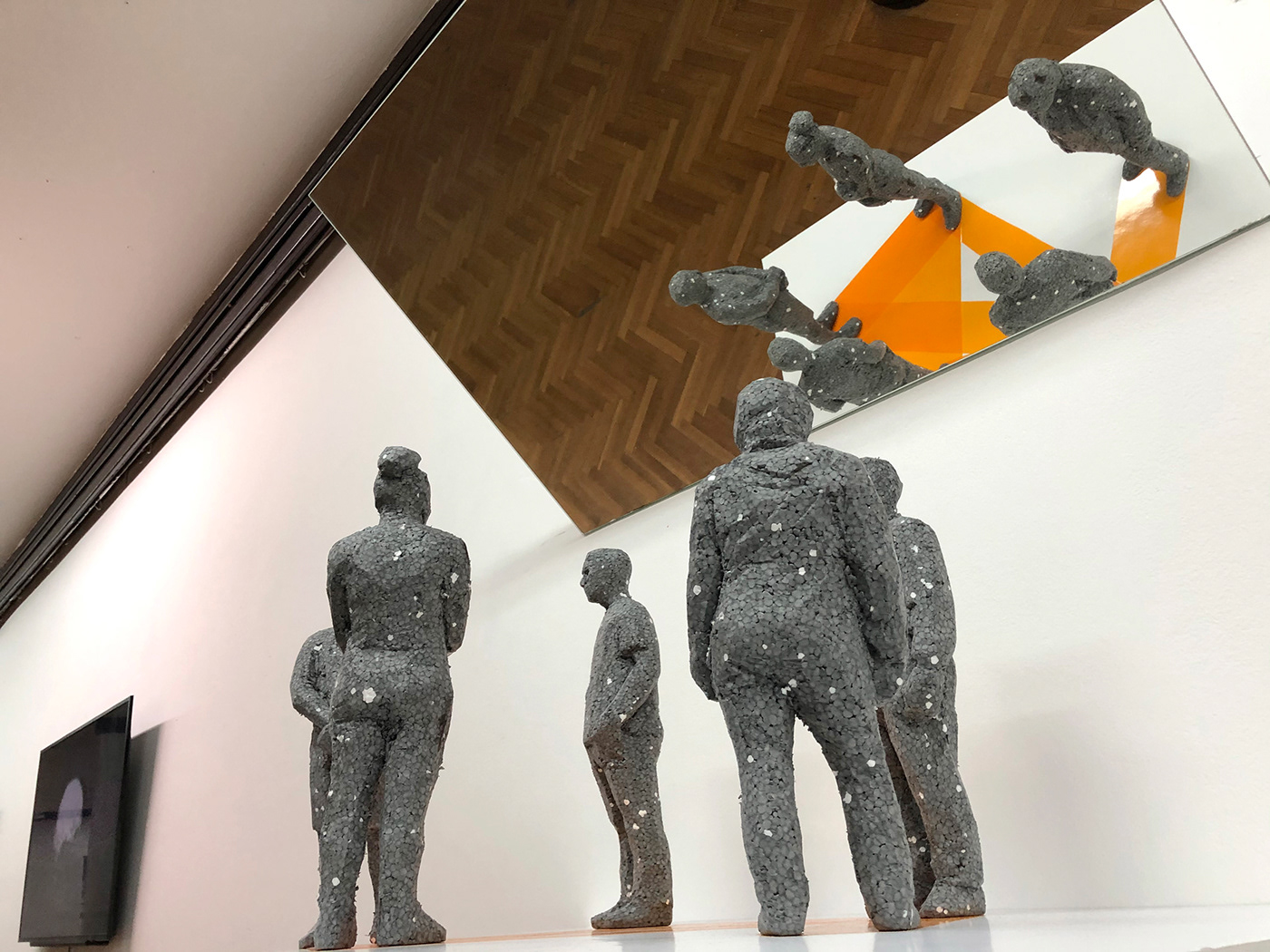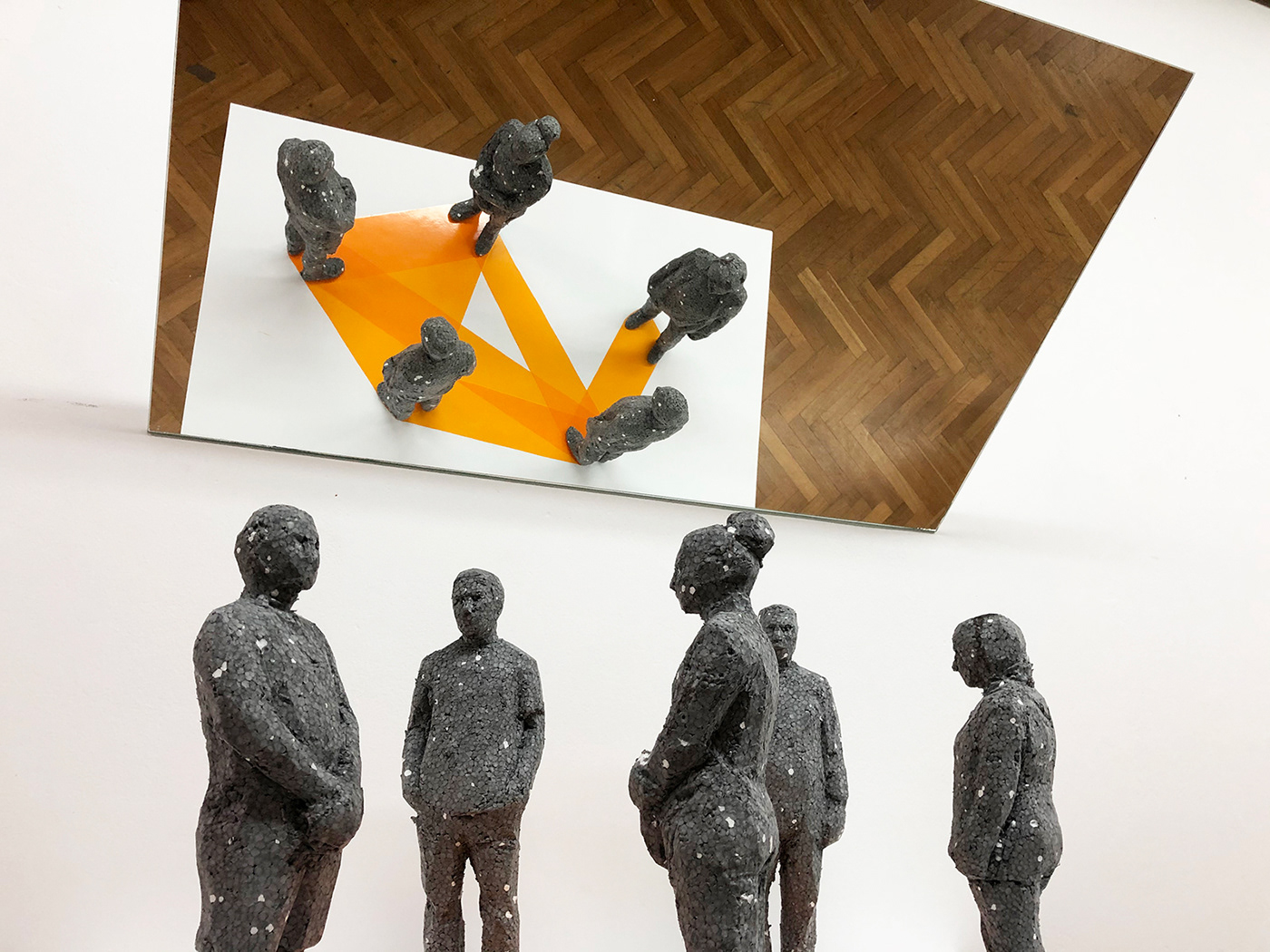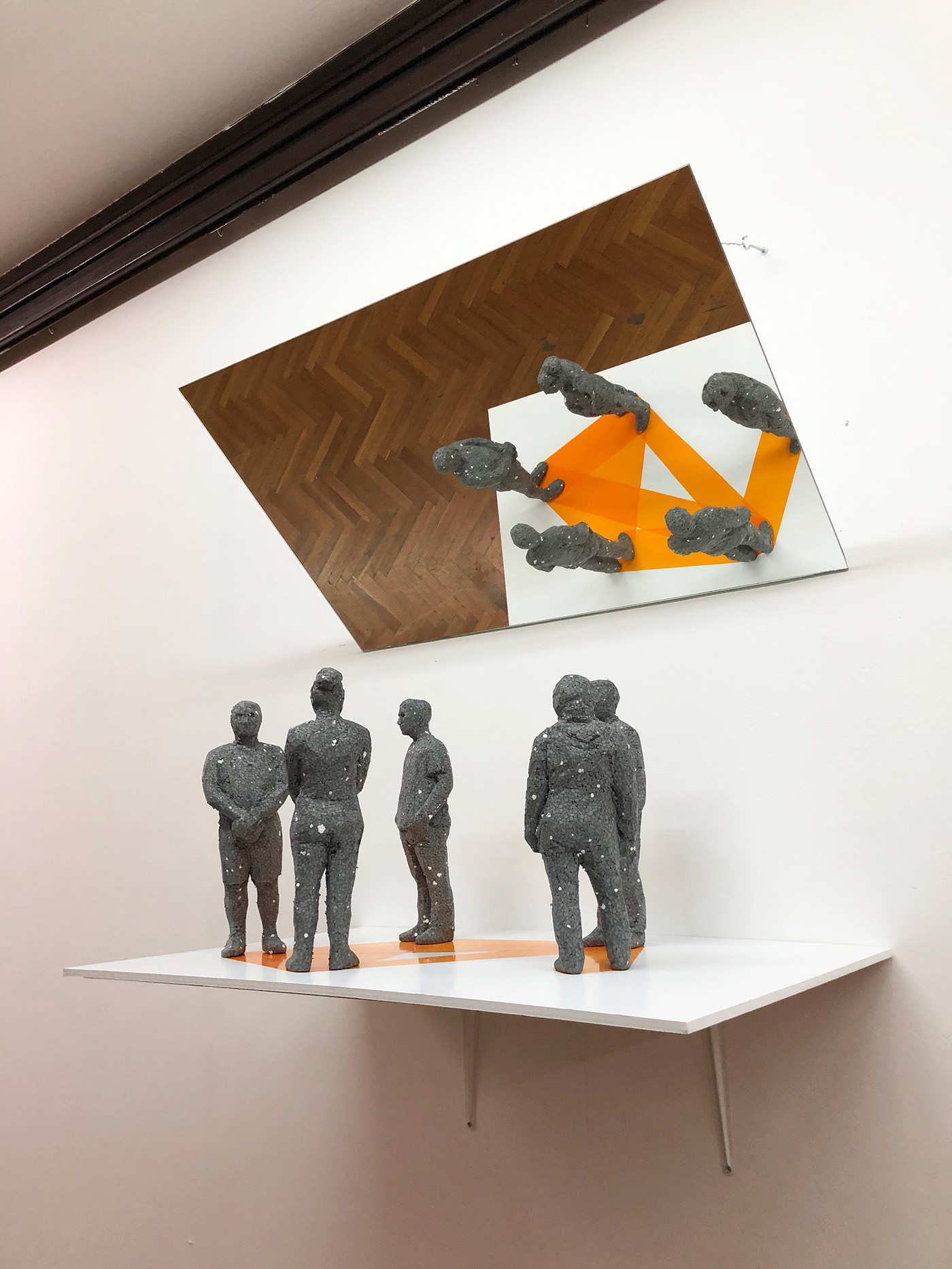Contemporary forms of communication and common techniques used for documentation of interpersonal relations often emphasize the very structure of social interaction – showing us the enormous amount of small “units”, dyadic interactions (such as a brief exchange between two people at a certain moment). All these particles form a complex network of relations, a network that is often perceived in contemporary society as almost tangible, given the strong effect social networks have in making the relations visible, simplified, countable. But the participant is still not able to grasp the connections and analyse them without missing important pieces of information – the network is constantly moving, changing its nature. One needs to find an objective position in order to observe, and to frieze moments in order to understand them – to fragment the time hoping to make contemplation possible.
An individual trying to understand the communication patterns surrounding him must always decide between two options – lively and dynamic participation or observation of simplified, schematized processes. What would be the purpose of this other approach, the analytical one? Will it ensure a better understanding of our digitalized social relations, or will it just show bits of memory as an arbitrary diagram? Is it possible to observe from two points at once? And most of all, does the process need to stop in order for us to be able to “read” the data? The Diagram view series aims to explore the need for symbolic representation of human relations and its possibilities, while using a predesigned system of visual signs. At the same time, it underlines the ever changing nature of social life and the dependence of our objectivity on various complex factors, trying to determine whether halting is an unavoidable stage of the process, the fictional notion of our subjective perception or just an effective way of coping with overwhelming amount of data.





